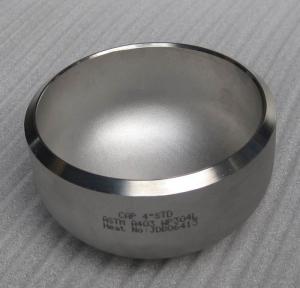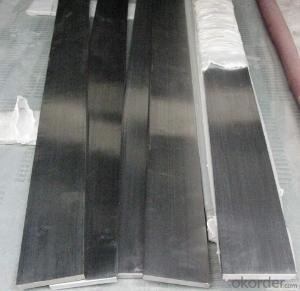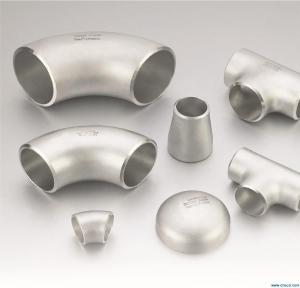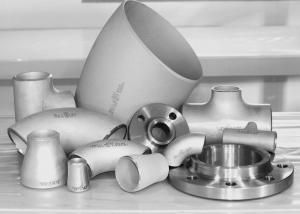Wd40 On Stainless Steel
Wd40 On Stainless Steel Related Searches
Best Paint For Stainless Steel Blanket Insulation For Steel Buildings Primer For Galvanized Steel Foam Filter For Stainless Steel H S Code For Stainless Steel Surface Grinding Wheels For Stainless Steel Surface Grinding Wheels For Hardened Steel Hole Saw For Stainless Steel Paint For Stainless Steel Stainless Steel For BbqHot Searches
Steel Mesh Panels For Sale Price For Stainless Steel Scrap Scrap Price For Stainless Steel Price For Stainless Steel Stainless Steel Tank For Sale Stainless Steel Sheets For Sale Cheap High Tea Sets For Sale Stainless Steel Tanks For Sale Stainless Steel For Sale High Density Fiberboard For Sale Solar Hot Water Collectors For Sale Scaffolding For Sale In Uae Scaffolding For Sale In Ireland Scaffolding For Sale In Houston Type Of Inverter For Solar Price Of Shipping Containers For Sale Types Of Inverter For Solar Stock Price For Aluminum Used Solar Inverter For Sale Steel Mesh Panels For SaleWd40 On Stainless Steel Supplier & Manufacturer from China
Okorder.com is a professional Wd40 On Stainless Steel supplier & manufacturer, offers integrated one-stop services including real-time quoting and online cargo tracking. We are funded by CNBM Group, a Fortune 500 enterprise and the largest Wd40 On Stainless Steel firm in China.Hot Products
FAQ
- Yes, stainless steel flats are suitable for food processing. Stainless steel is a popular choice for food processing and handling equipment due to its many beneficial properties. Firstly, stainless steel is highly resistant to corrosion, which makes it ideal for use in environments where food products are processed, stored, and transported. It also offers excellent hygiene, as its smooth and non-porous surface does not harbor bacteria or other contaminants. Stainless steel flats are also durable and easy to clean, making them suitable for rigorous food processing operations. They can withstand high temperatures, which is essential for heat-intensive processes such as cooking and sterilization. Additionally, stainless steel is resistant to chemicals commonly used in the food industry, including cleaning agents and food ingredients. Moreover, stainless steel flats are non-reactive, meaning they do not leach any harmful substances into the food being processed. This is particularly important when working with acidic or alkaline foods, as other materials may react and affect the taste or quality of the food. In summary, stainless steel flats are highly suitable for food processing due to their corrosion resistance, hygiene, durability, ease of cleaning, heat resistance, chemical resistance, and non-reactive nature. These properties ensure the safety and quality of food products while maintaining high standards of hygiene and cleanliness in food processing facilities.
- Yes, stainless steel flats can be used in pharmaceutical manufacturing. Stainless steel is widely used in the pharmaceutical industry due to its corrosion resistance, durability, and ease of sterilization. It is commonly utilized for equipment, storage tanks, piping systems, and other pharmaceutical manufacturing components.
- There are several environmental benefits of using stainless steel flats: 1. Durability and longevity: Stainless steel flats are known for their exceptional durability and longevity. They do not corrode or rust easily, even in harsh environments. This means that they have a longer lifespan compared to other materials, reducing the need for frequent replacements. By using stainless steel flats, we can significantly reduce the amount of waste generated from discarded materials. 2. Recyclability: Stainless steel is highly recyclable, with a recycling rate of over 90%. When stainless steel flats reach the end of their useful life, they can be easily recycled and transformed into new products without losing their inherent properties. Recycling stainless steel reduces the demand for virgin materials, conserves natural resources, and minimizes the energy and emissions associated with primary metal production. 3. Hygiene and cleanliness: Stainless steel is a non-porous material that is resistant to bacteria, mold, and other pathogens. This makes it an excellent choice for applications that require high levels of hygiene, such as food processing, healthcare facilities, and laboratories. By using stainless steel flats in these industries, we can ensure a cleaner and safer environment for both workers and consumers. 4. Energy efficiency: Stainless steel flats have excellent thermal conductivity, allowing for efficient heat transfer. This property makes them ideal for applications that require energy-efficient heating or cooling systems. By utilizing stainless steel flats in HVAC systems, appliances, and industrial equipment, we can reduce energy consumption and contribute to overall energy efficiency. 5. Reduced environmental footprint: Stainless steel is manufactured using a process known as the electric arc furnace (EAF), which relies on electricity rather than fossil fuels. This manufacturing process emits fewer greenhouse gases compared to traditional steelmaking methods, reducing the environmental footprint associated with stainless steel production. Overall, the environmental benefits of using stainless steel flats include their durability, recyclability, hygiene properties, energy efficiency, and reduced environmental footprint. By choosing stainless steel flats, we can contribute to a more sustainable and environmentally friendly future.
- Soldering stainless steel flats can be done, but it necessitates specific techniques and soldering materials. Due to its high heat and oxidation resistance, traditional soldering methods are challenging to use on stainless steel. Nevertheless, employing specialized fluxes and silver solder enables the creation of a robust bond between stainless steel flats. The procedure entails a thorough cleaning of the soldering surfaces, the application of flux to facilitate solder flow, and the use of a high-temperature soldering iron or torch to heat the joint. It is important to bear in mind that soldering stainless steel calls for higher temperatures and longer heating times compared to other metals. Moreover, it is advisable to practice on spare pieces before attempting to solder stainless steel flats in order to ensure proper technique and achieve desired outcomes.
- Stainless steel flats, also known as stainless steel bars or stainless steel rectangles, possess a range of desirable properties that make them widely used in various industries. Firstly, stainless steel flats exhibit excellent corrosion resistance. This is due to the high chromium content in stainless steel, which forms a passive oxide layer on the surface, protecting it from rust and corrosion. This property makes stainless steel flats suitable for use in environments where they may be exposed to moisture, chemicals, or harsh conditions. Secondly, stainless steel flats have high strength and durability. The addition of elements like nickel, molybdenum, and nitrogen enhances the strength and toughness of stainless steel, making it resistant to deformation and wear. This strength makes stainless steel flats a reliable choice for applications that require load-bearing capabilities or structural integrity. Furthermore, stainless steel flats offer excellent heat resistance. They can withstand high temperatures without losing their strength or becoming susceptible to thermal expansion. This property makes stainless steel flats suitable for use in heat exchangers, boilers, and other high-temperature applications. Stainless steel flats also exhibit good formability and weldability. They can be easily shaped or molded into various designs, making them versatile for different applications. Moreover, stainless steel flats can be welded or joined using various techniques, allowing for easy assembly and fabrication. Lastly, stainless steel flats have an attractive appearance. With a smooth and shiny surface, they provide an aesthetically pleasing finish that can enhance the visual appeal of structures or products. This property makes stainless steel flats popular in architectural, decorative, and design applications. In summary, stainless steel flats possess properties such as corrosion resistance, high strength, heat resistance, formability, weldability, and an appealing appearance. These properties make stainless steel flats a versatile and reliable choice for a wide range of industries, including construction, automotive, aerospace, food processing, and many others.
- Yes, stainless steel flats can be used in electrical enclosures. Stainless steel is widely used in the construction of electrical enclosures due to its excellent properties. It is corrosion-resistant, which ensures that the enclosure can withstand harsh environments and protect the electrical components inside. Stainless steel also has high strength and durability, making it suitable for providing structural support to the enclosure. Additionally, stainless steel has good electrical conductivity, which is important for grounding and dissipating any electrical charges. Overall, stainless steel flats are a reliable choice for electrical enclosures due to their corrosion resistance, strength, durability, and electrical conductivity.
- Stainless steel flats have several advantages over other flat steel products. Firstly, they are highly resistant to corrosion and rust, making them suitable for various applications, especially in harsh environments or where exposure to moisture is expected. Secondly, stainless steel flats offer excellent durability and strength, ensuring long-lasting performance. Additionally, they exhibit good heat resistance, making them ideal for high-temperature applications. Furthermore, stainless steel flats are also aesthetically appealing, with a sleek and modern finish. Overall, their superior corrosion resistance, strength, durability, and visual appeal set them apart from other flat steel products.
- In the transportation industry, stainless steel flats are used for various applications due to their durability, corrosion resistance, and high strength-to-weight ratio. There are several types of stainless steel flats commonly used in this industry, including: 1. Austenitic Stainless Steel: This type of stainless steel is known for its excellent corrosion resistance and high ductility. It is commonly used in transportation applications such as exhaust systems, fuel tanks, and components for aircraft and marine vessels. 2. Ferritic Stainless Steel: Ferritic stainless steel flats offer good corrosion resistance and high-temperature strength. They are often used in automotive exhaust systems, as well as in components for buses and trucks. 3. Martensitic Stainless Steel: Martensitic stainless steel flats have high strength and hardness, making them suitable for applications that require resistance to wear and abrasion. They are commonly used in the manufacturing of components such as springs, fasteners, and shafts in the transportation industry. 4. Duplex Stainless Steel: Duplex stainless steel combines the properties of austenitic and ferritic stainless steels. It offers high strength, excellent corrosion resistance, and good weldability. This type of stainless steel is used in various transportation applications, including pressure vessels, pipes, and structural components. 5. Precipitation-Hardening Stainless Steel: These stainless steel flats are known for their high strength and excellent corrosion resistance. They are often used in the manufacturing of aerospace components, such as landing gear, turbine blades, and structural parts. It is important to select the appropriate type of stainless steel flat based on the specific requirements of the transportation application. Factors such as corrosion resistance, strength, temperature resistance, and cost should be considered to ensure optimal performance and longevity in the transportation industry.















































